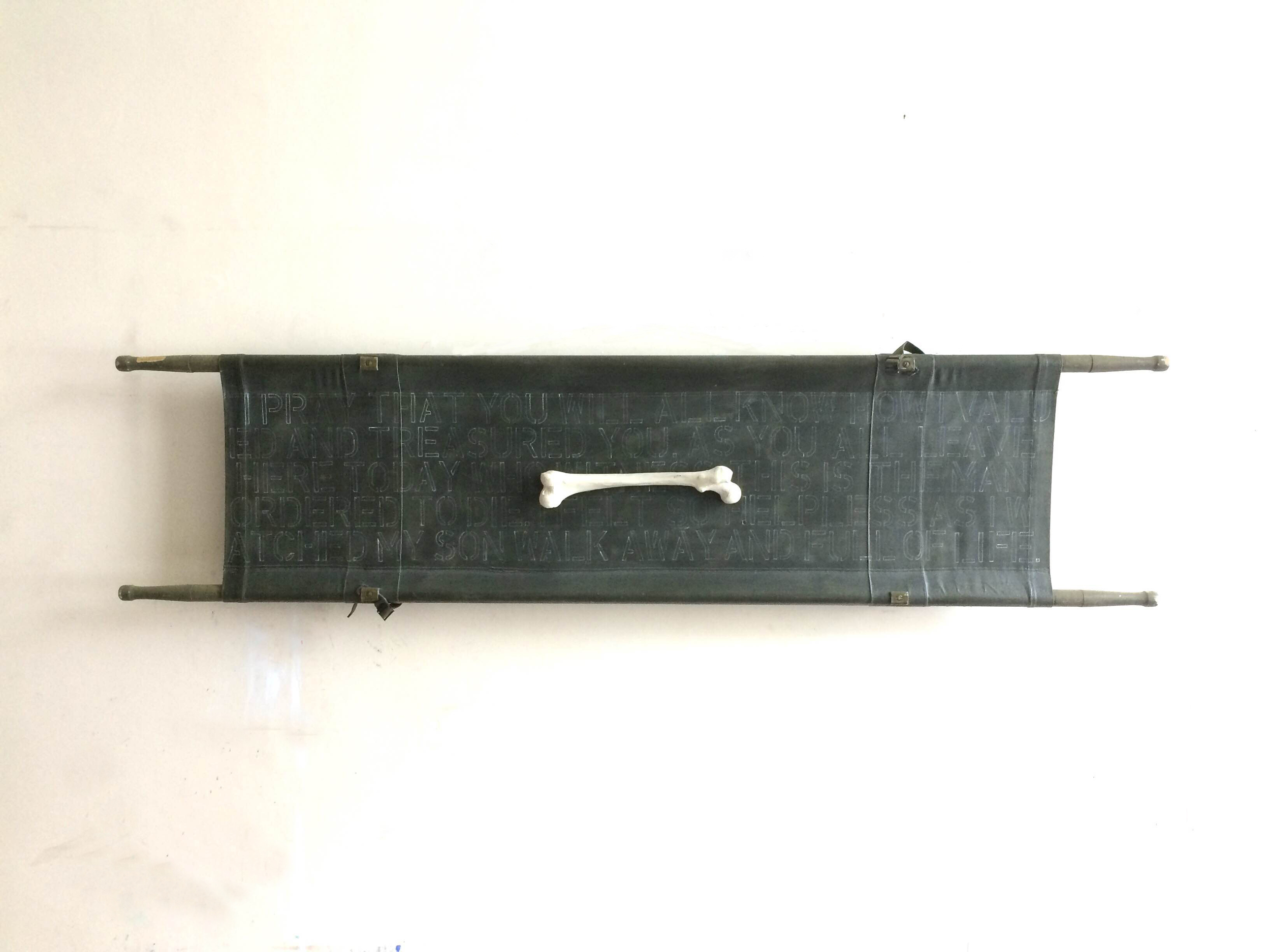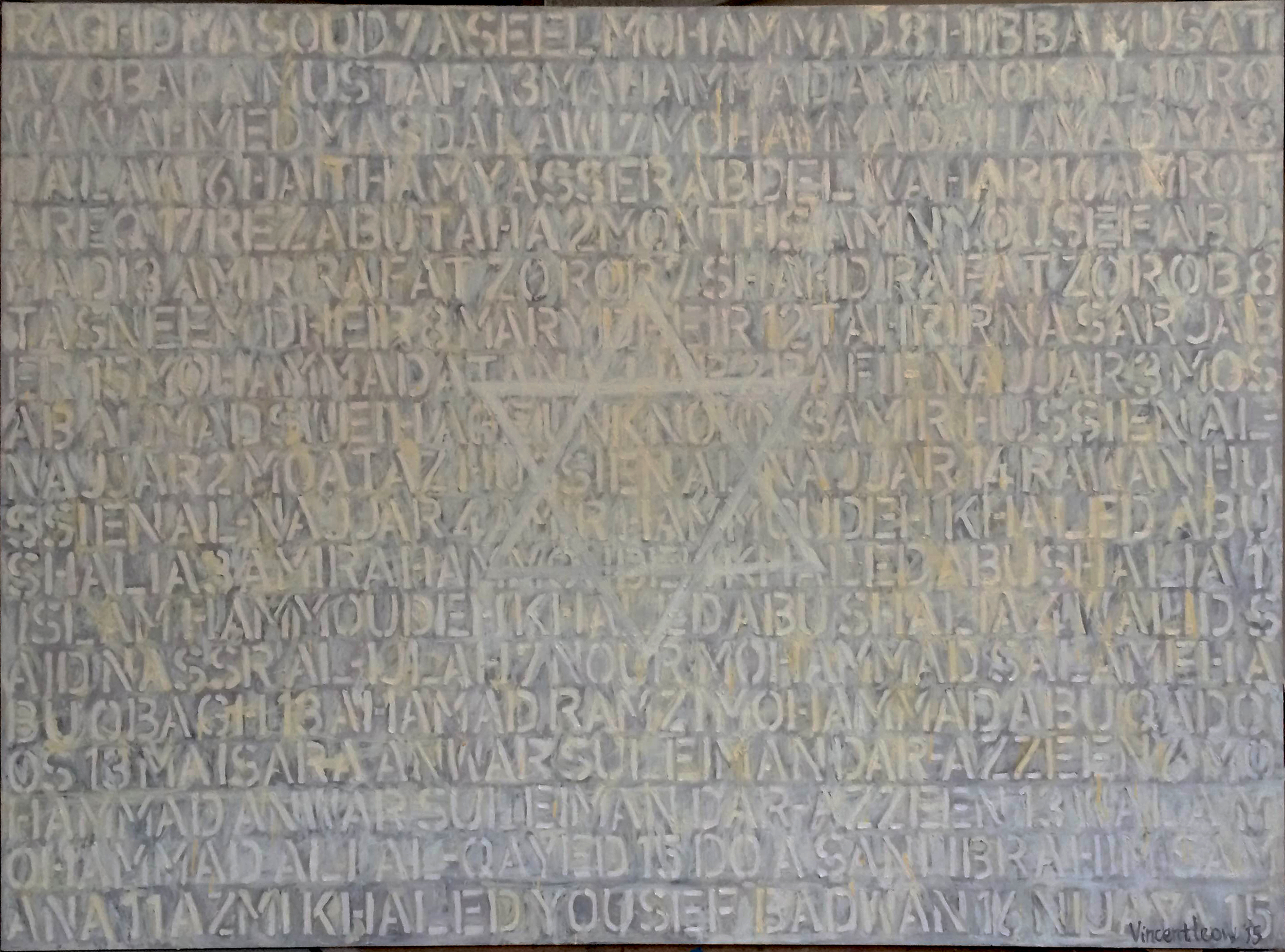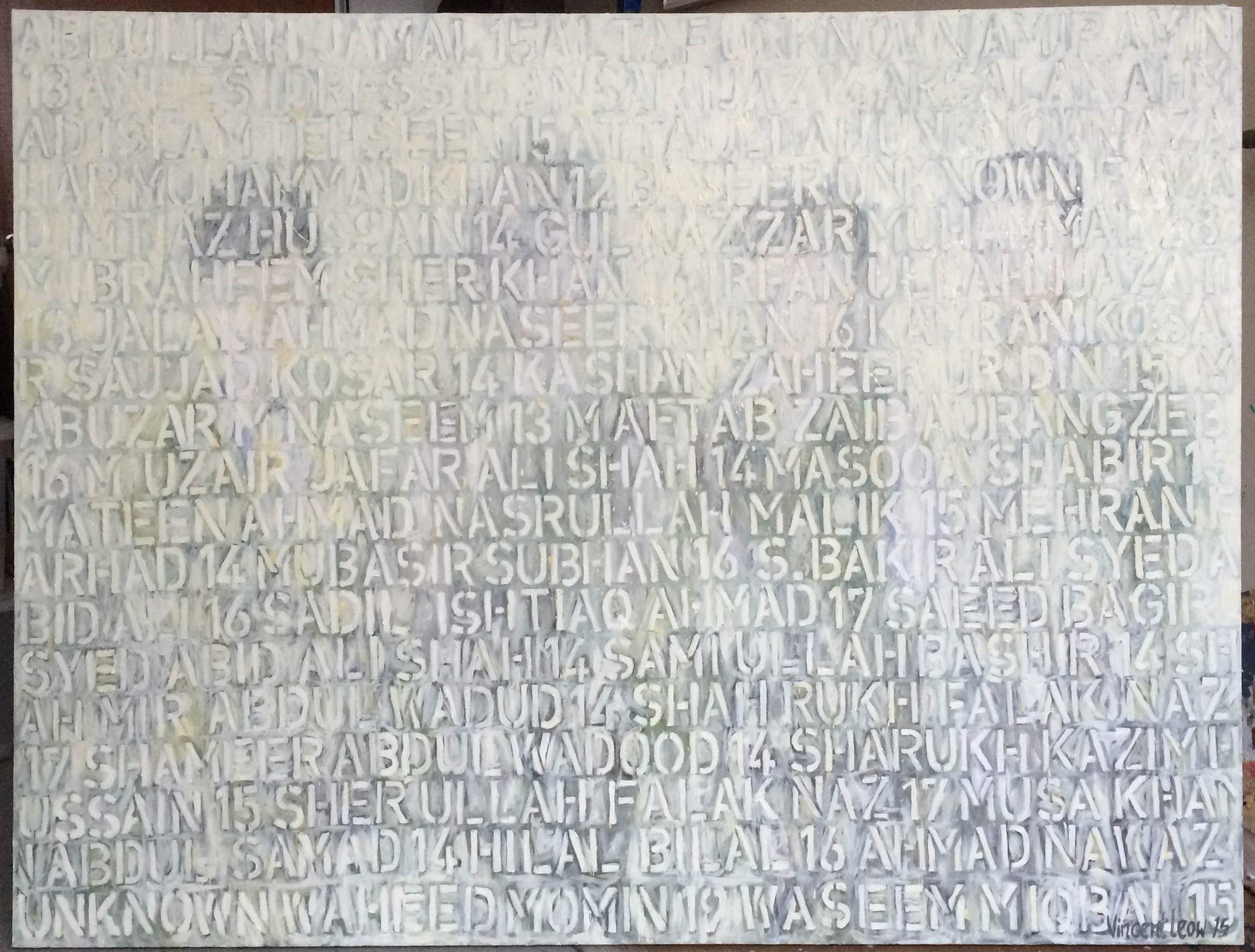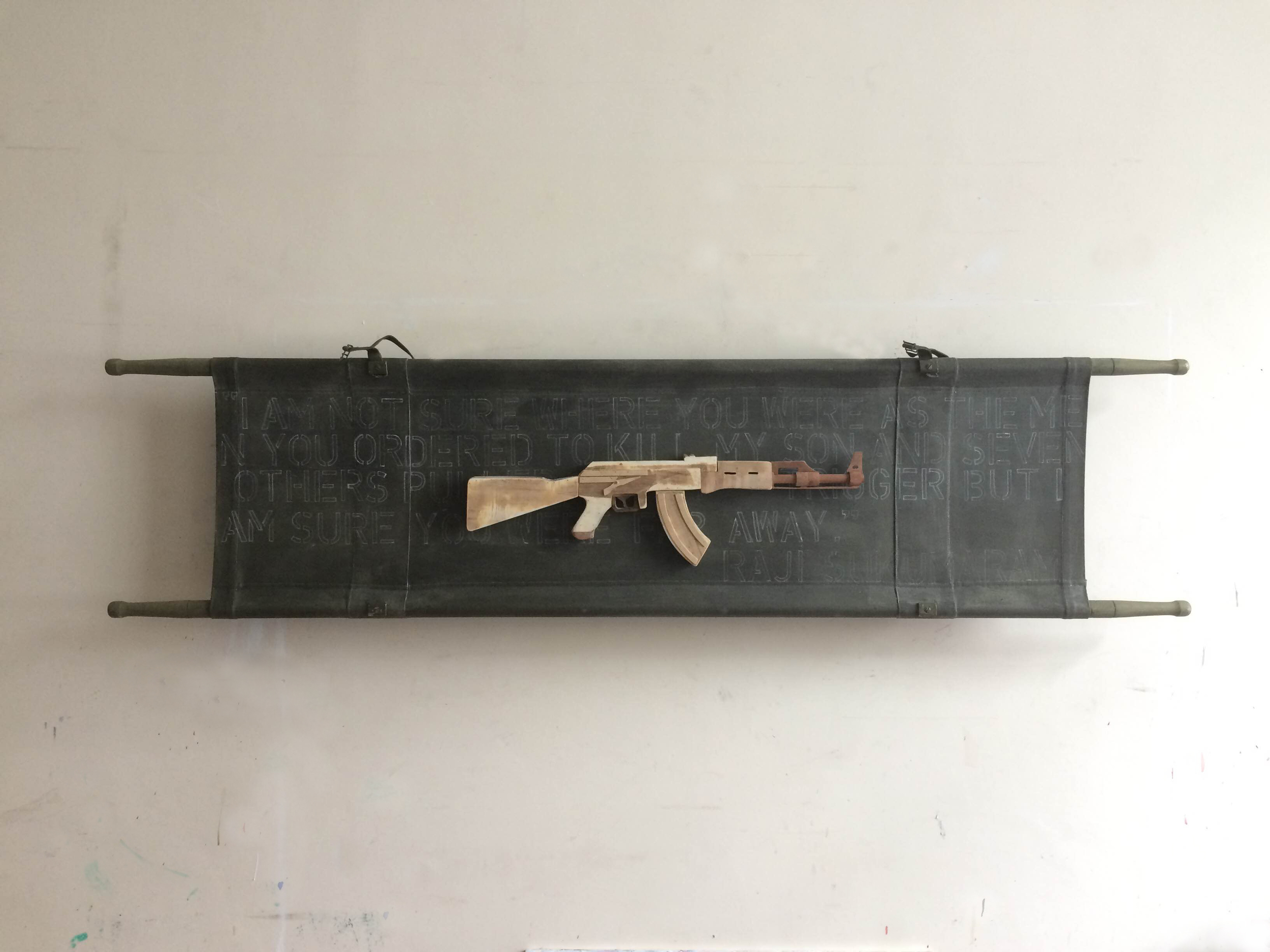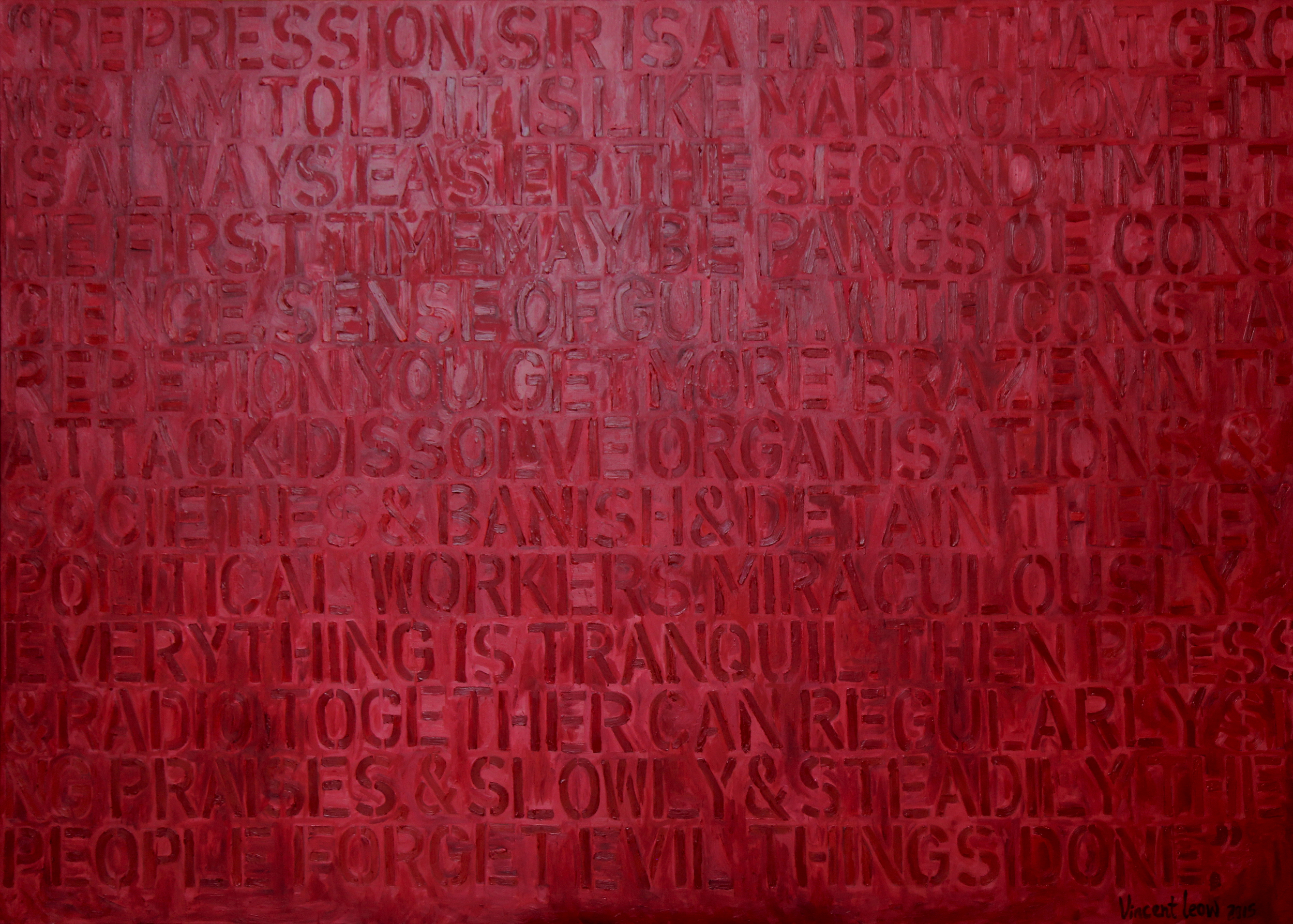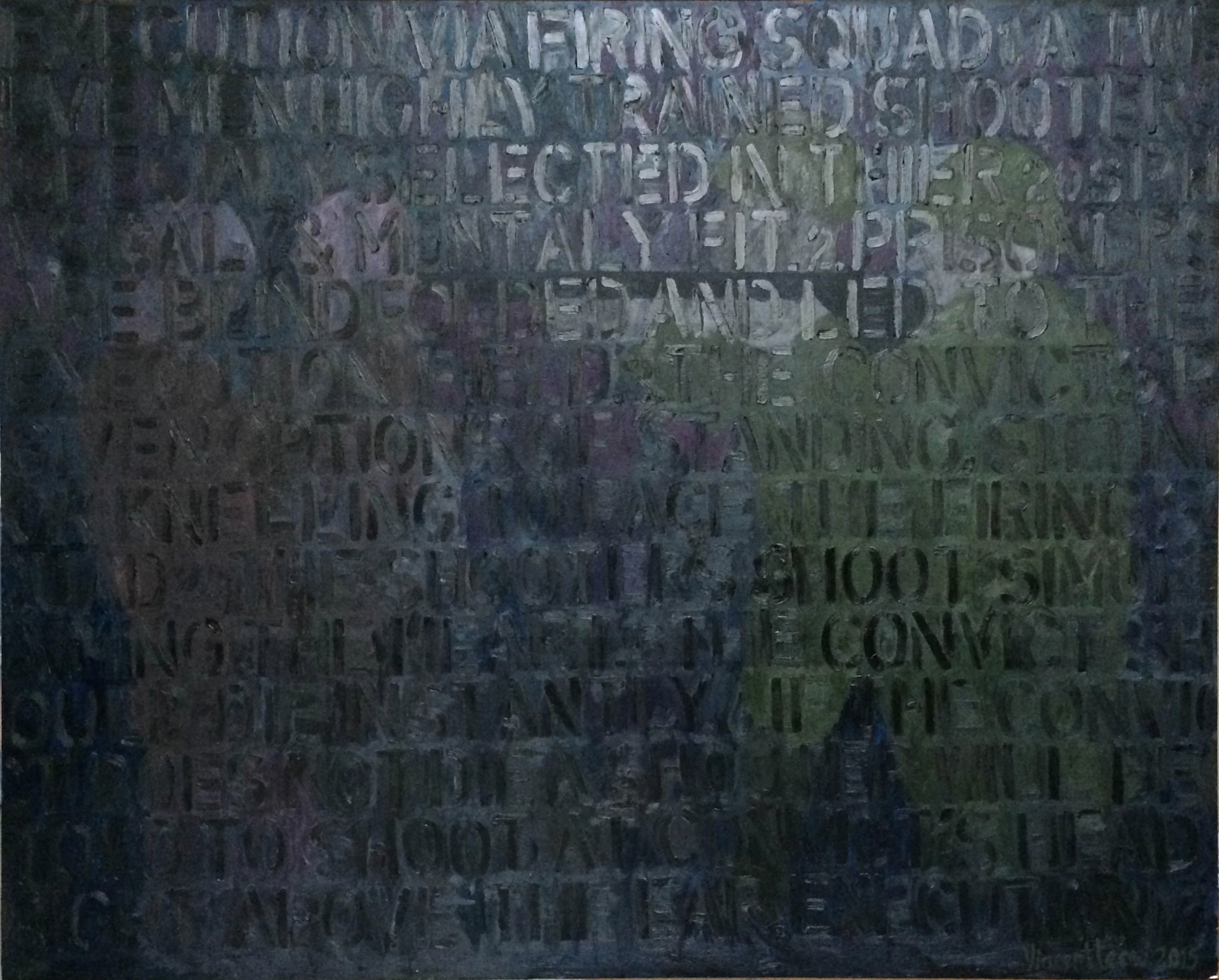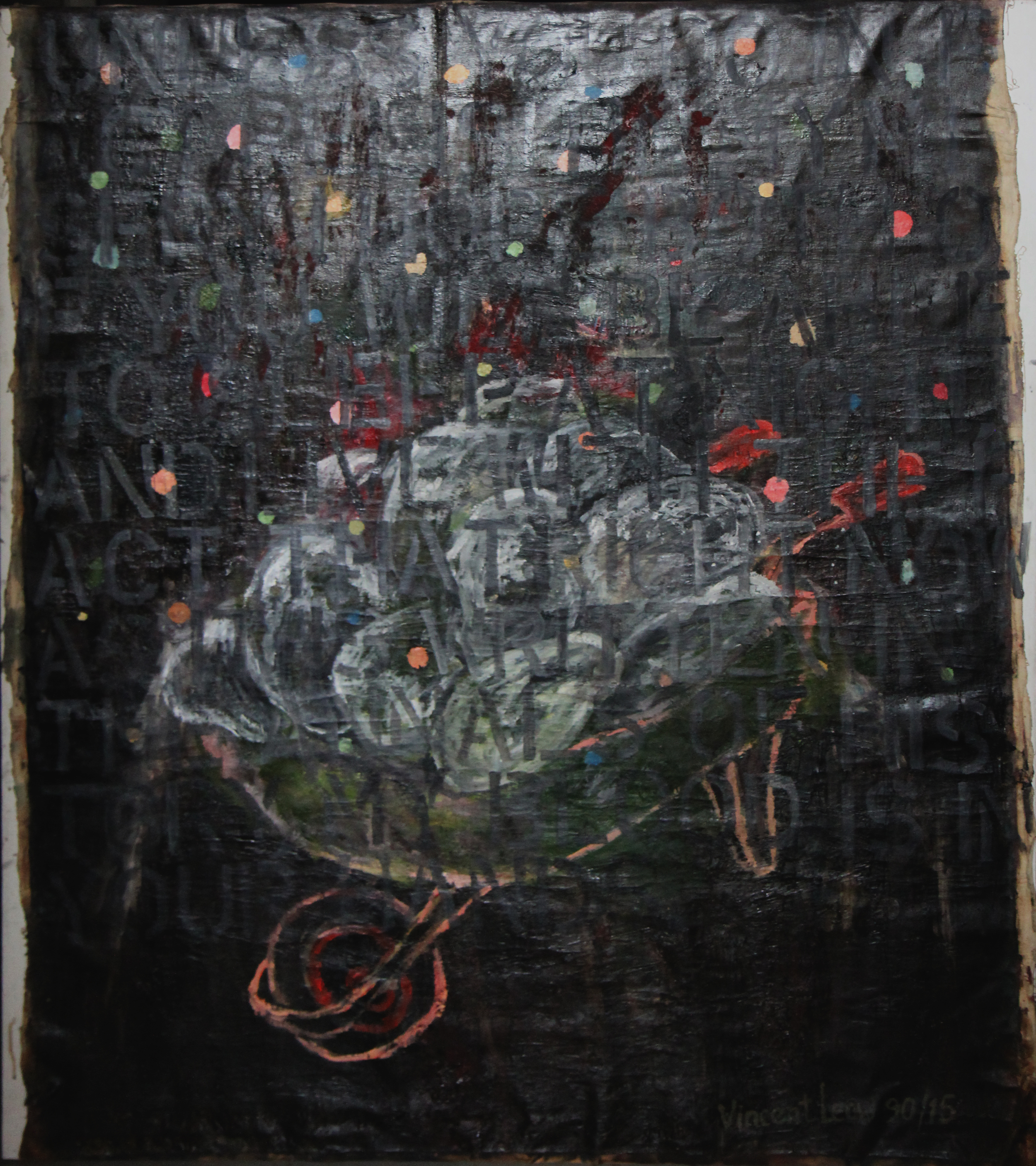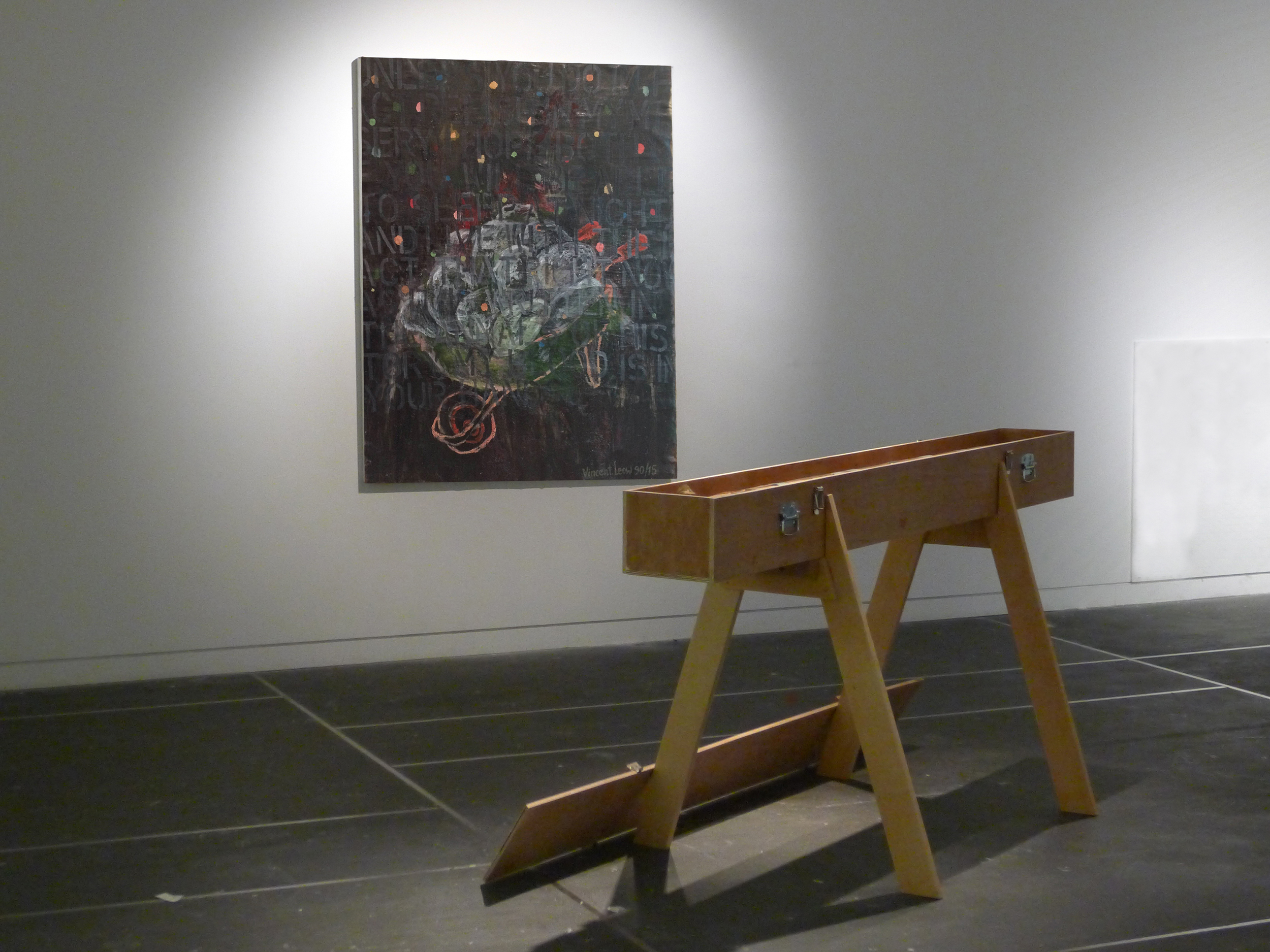For Those Who Have Been Killed
Solo exhibition by Vincent Leow
Curated by Christina Arum Sok
3 December 2015 - 3 January 2016
Open House: 5 & 6 December, 11AM – 7PM
Artist & Curator Talk: Saturday 12 December 3-4PM
For Those Who Have Been Killed:
Vincent Leow’s Eulogy for the Forgotten Lives of the 21st Century
An Essay by Christina Arum Sok
A eulogy is typically a speech or writing in praise and honour of a deceased person. When those close to us pass on, we want to commemorate their lives and make a tribute to who they were when they were alive. Every human life has equal value and importance. Yet, there are hundreds of thousands of lives lost every year in non-natural and tragic circumstances of wars, massacres and terrorist acts as well as of crimes and executions. These lives, including that of innocent children’s, vanish into thin air, as they are forgotten and disappear almost without a trace; no commemoration, no eulogy.
Today’s media report on countless of nameless faces, victims of corruption, dictatorships and violence. The news of 21st century’s refugees and displaced people fleeing for their lives floods headlines and social media. At the same time, we are witnessing a time where Western media is selective about the news that is reported, as we have seen in the case of the terrorist attacks in Beirut and Paris in November 2015, where one city’s tragedy was not even reported in mainstream media while the second city’s catastrophe went viral all over the world, trending on social media with the world mourning together, commemorating Paris through images and empathetic words.
Vincent Leow, a pioneer of the contemporary art scene in Singapore, is sensitive towards these stories and how we as the public consume them. Leow who was at the forefront of contemporary art, developing new forms of expression in Singapore in the 1980s and 1990s, sheds new light on the social and political happenings in our world today. Leow urges us to go beyond the superficialities of our lives—our lives that are so disconnected from real events happening around us, as we become increasingly desensitised to the news. As he gathers different pieces of news from around the world and reappropriates them into his artwork, he provides a new outlet of communication in the midst of our fast-moving contemporary ‘digital’ culture that is becoming increasingly impersonal. Leow has always been at the artistic frontier, challenging conventional artistic practices and evolving beyond “beautiful pictures” (Sabapathy & Briggs, 2000, p.17), as he believes art is not merely about aesthetics and pleasing the eye, but a vehicle to confront the truth, challenge ideas and inspire new modes of thinking.
Staying true to the ideological shift towards conceptual art that is focused on ideas, con-cepts and processes rather than being bounded by traditional aesthetics, Leow’s practice seeks to explore new ways of expressing his ideas. For Leow, the beginning point of his art is always the idea, and his chosen artistic medium most poignantly expresses his idea. Leow sees his current practice as an intersection of the two- and three-dimensional media, as some of the paintings in For Those Who Have Been Killed have been combined with objects to create sculptural pieces that feature recognisable items which are incorporated into stencilled text and painted surfaces.
The main idea Leow communicates in this exhibition is highlighting how we, in developed nations and technologically-advanced societies like Singapore, are passing through time and space in a desensitised bubble. Information is filtered and watered down through various media channels, and though we have access to the world at our finger tips as we scroll through social media, we perpetually remain behind a screen. Leow is commenting on how we are engrossed and submerged in a virtual world, where interactions between people occur virtually, while the constant flood of new information has us disengaged and anaesthetised. We glance past information so rapidly as we scroll through our news feeds that nothing really penetrates us emotionally. As a consequence, the physical world in which we live in seems less significant. It has become convenient to remain behind virtual screens, and our ‘part’ as global citizens seem fulfilled as we make our contribution in sim-ply retweeting and sharing information. We do not even question what news we are fed or think twice about how we interpret the events around us. As long as we are not affected or physically in harm’s way, the news does not penetrate our emotional sphere.
Leow’s selection of news events are purposely random, to mimic the exact way in which we encounter news on social media: random and fleeting. It may seem as if we do not actively choose what news we receive, as it is pushed onto us by the social media outlets we take part in. However, our participation occurs once we start disseminating and sharing what news seems to be most popular, thus neglecting other equally as important news stories; this phenomenon is referred to as news that is ‘trending’. As certain news items are retweeted, shared and reposted throughout social media channels, information is con-stantly altered and perhaps distorted. The way in which the information is received, con-sumed and interpreted by people also changes, akin to the game of ‘Telephone’ or ‘Chi-nese Whispers’.
The notion of ‘Chinese Whispers’ is conveyed through Leow’s works—the subtly layered paintings with excerpts of text from news articles overlaying faint, obscure images. As in-formation passes through generations of people, natural errors are inevitable, and Leow is interested in this manipulation and distortion that leads to the transformation of the original news and events. Similar to rumours or gossip, news can be sensationalised or trivialised through the hands of social media. In the end, what we end up consuming are perhaps fragments of a story—one image here and there, one caption here and there. We take in bits and pieces of information that are not the whole picture; the truth and the entirety of the event is blurred in our overloaded minds.
Leow’s monochromatic paintings are a visual representation of the blurred information we encounter through our social media news feeds. In addition, the obscured atmospheric quality of each painting’s surface suggests notions of confusion and the complex layers that make up the events of each news story. Peshawar’s List is a strikingly eerie work that hints of four ghost-like figures in the background that are vaguely identifiable beyond the words that overlay the image. This work is in response to the December 2014 Taliban school attack in Peshawar that left 141 dead, most of them innocent children. To those of us who may have encountered this news only saw the death toll number and allowed the news to wash over us as simply another piece of tragedy. Most of us do not really under-stand the background of the event or ever really stop to process this incident; in many ways, the number 141 is merely added to the ‘list’ of other lives that are lost and forgotten. Furthermore, the critical point is that we do not remember this event singularly and facts become blurred, as it has been clouded by other events and filtered through social media. By transcribing the names of the victims along with their ages, Leow commemorates each of the lives, eulogising them.
Gaza’s List is another similar work in memory of nearly 300 Palestinian children killed in August 2014. The act of transcribing the names of the victims becomes a celebration of these children’s lives, honouring their existence and the work becomes a memorial symbol for this tragic event. Although the Israel-Gaza conflict is an event that is distant and far-removed from the shores of Singapore, as Leow commemorates these victims, giving each victim a name, we are able to relate at a basic human level, and a culture of mutual empathy is sparked. Admittedly, we have become desensitised to a lot of news as we are bombarded by the news of what seems like endless death in wars and heinous crimes. By deconstructing these pieces of information, Leow seeks to link the events in his paintings and by doing so is able to elicit a recurring emotional reaction to the death of the victims—a call for all of humanity to stand in solidarity and share a mutual empathy.
Andrew’s Eulogy, Raji’s Letter and The Executioner reference a more complex event, the Bali Nine case, where nine Australians were convicted of smuggling heroin from Indonesia to Australia. The ringleaders, Andrew Chan and Myuran Sukumaran were sentenced to death by firing squad in Indonesia, and Leow has reappropriated this news event into three works. Andrew’s Eulogy and Raji’s Letter both utilise a stretcher on which Leow has inscribed stencilled text, excerpts from Andrew Chan’s own eulogy and Myuran Sukumaran’s mother’s letter to the Indonesian president, respectively. Overlaying the text, Leow has incorporated symbolically-loaded objects, a bone and a rifle, a visual motif to what the works represent. Meanwhile, the stretcher that acts as the canvas gives a chilling suggestion of these two men’s bodies, which were shot at like animals by a firing squad. These two works elicit a basic human response, as we are faced with the raw emotions felt through the words inscribed on the works, while also confronted by powerful visual symbols the overlaid objects represent.
Beyond the sensationalistion of the Bali Nine case, we are able to encounter the primary human emotion of empathy and garner a shared compassion for humanity. The lives of these two men are seen singularly, taken away from the prejudices of the crimes they were convicted for. Underlying the circumstances of the event, the empty stretchers act as tombs for Andrew Chan and Myuran Sukumaran; their bodies commemorated and respected in spite of the horrific execution they went under.
Though each piece of news we encounter on social media is at random and always fleet-ing, Leow is calling out for increased awareness and sensitivity for all that we encounter as well as what has been filtered out. For Those Who Have Been Killed is a tribute to all the lives that are futilely lost; we are called to commemorate all of humanity, every single life that has been taken. Whether it is one of 300 Palestinian children massacred or a drug smuggler who was crudely executed by a firing squad, the works in this exhibition engage us, the viewer, provoking us to deliberate and re-connect to the real world, beyond our virtual reality ‘screens’. Through Leow’s humbling works, life is celebrated.
About the Artist
Vincent Leow (b. 1961) is a Singaporean artist whose practice spans a wide range of genres from sculpture, installation, performance art to painting and mixed-media. He has exhibited internationally and regionally; his works have been collected and commissioned by various museums, corporate companies and private collections both locally and internationally.
Leow studied at the LASALLE College of the Arts and graduated with a Diploma in Fine Arts (Sculpture) in 1987. He obtained his Master of Fine Arts (MFA) from the Maryland Institute College of Art (MICA) in 1991, Doctorate of Fine Arts (DFA) from the Royal Melbourne Institute of Technology in Melbourne (RMIT) in 2005. Leow has taught art at LASALLE College of the Arts (2003-2007) and Sharjah University, College of Fine Arts and Design in the United Arab Emirates (2008-2013).
Vincent Leow was awarded the Culture Award (2002) by the Japanese Chamber of Commerce and Industry for his contribution to the arts in 2002. Leow represented Singapore in the 52nd Venice Biennale (2007), 9th Trienniale India, New Delhi (1997), 1st Asia Pacific Triennial of Contemporary Art, Brisbane, Australia (1993).
